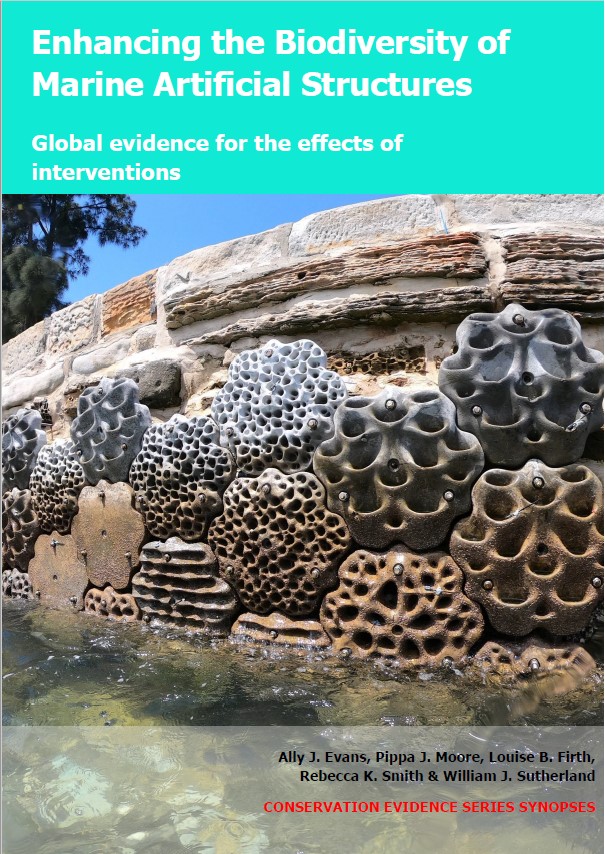Create long flexible habitats (>50 mm) on intertidal artificial structures
-
Overall effectiveness category Awaiting assessment
-
Number of studies: 1
View assessment score
Hide assessment score
How is the evidence assessed?
-
Effectiveness
not assessed -
Certainty
not assessed -
Harms
not assessed
Study locations
Supporting evidence from individual studies
One replicated, controlled study in 2009 on five intertidal jetty pilings in the Port of Rotterdam, the Netherlands (Paalvast et al. 2012) reported that creating long flexible habitats (‘hulas’) on pilings altered the macroalgae and non-mobile invertebrate community composition on piling surfaces, and that hulas were colonized by macroalgae and invertebrates, but data were not statistically tested. After eight months, hula ropes supported mussels (Mytilus edulis: 5% cover), barnacles (Amphibalanus improvisus: 1%), red macroalgae (Ceramium rubrum: 0.2%) and amphipods (Amphipoda: 11–100 individuals/rope), which were all absent from piling surfaces without flexible habitats. Average biomass on ropes was 1 g/cm. Piling surfaces under hulas supported mostly barnacles (50% cover), while pilings without flexible habitats supported mostly green macroalgae (50% cover). Long flexible habitats were created by attaching polyamide rope skirts (‘hulas’) around pilings in March 2009. One hula with 167 ropes (diameter: 6 mm; length: 550 mm; density: 167/m) was attached at lowshore around each of five wooden pilings, cleared of organisms. Hulas were compared with intertidal surfaces (200 × 200 mm) on five pilings without flexible habitats, cleared of organisms. Macroalgae and invertebrates on hula ropes and piling surfaces were counted and biomass (wet weight) measured in the laboratory over eight months.
Study and other actions tested
Where has this evidence come from?
List of journals searched by synopsis
All the journals searched for all synopses
This Action forms part of the Action Synopsis:
Biodiversity of Marine Artificial Structures
Biodiversity of Marine Artificial Structures - Published 2021
Enhancing biodiversity of marine artificial structures synopsis





)_2023.JPG)














